Seven New Wonders

World > Structures and Buildings
by Amy Fletcher
Related Links |
The original Seven Wonders of the Ancient World is a list that has no doubt long frustrated intrepid travelers. Six of the seven structures on the list haven't existed for centuries, and must be forever imagined, never seen. (And one of the seven, the Hanging Gardens of Babylon, may never have existed at all, according to some historians.)
Herodotus is believed to have started the original list, way back in the 5th century B.C., so it's no surprise that the architectural marvels he praised were not around for modern man to admire. But as of 7/7/07 travelers should take note: a new list is out, one that's modern in both origin and scope, and each of the structures on it can be viewed in person.
100 Million Votes
The new Seven Wonders of the World was compiled by popular vote over a six year period by a nonprofit group headed by Swiss adventurer Bernard Weber. In 1999 Weber began collecting suggestions from Internet users around the world. A list of over 200 nominations was narrowed down to 70, and then to 21, and finally to 7. The group reported more than 100 million votes, received via the Internet and cell phone messages, which, if true, makes this the largest poll ever conducted.
Not everyone has welcomed the list with open arms. Egyptian officials were not pleased that the Pyramids of Giza, the only original wonder that still exists, had to compete in the contest. Eventually the organizers decided to remove it from the voting and make it an honorary choice (making it a list of eight). And the United Nations Educational Scientific and Cultural Organization (UNESCO) did not support the contest, pointing out that the results reflected only the opinions of the cyber voters.
But for Warner and other organizers, the contest was a way to celebrate cultural diversity and history, and to encourage travel and communication. Half of the money raised during the contest will be used to fund the preservation and restoration of monuments around the world, including a giant Buddha statue destroyed by the Taliban in 2000 in Afghanistan.
The new list:
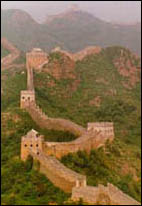 |
The Great Wall of China
This 4,160-mile wall was built to protect China from invading Huns, Mongols, and other tribes, and to unite fortifications into one defense system. Begun in the 7th century B.C., the barricade took hundreds of years to build, and ranks as the world's longest man-made structure-and is apparently the only one visible from space.
 |
Petra
Jordan
This ancient capital city was built around 9 B.C. during the reign of King Aretas IV and continued to flourish during the Roman Empire. It is now visible in its pink stone ruins and carved façade.
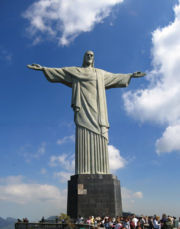 |
Christ Redeemer Statue
Brazil
Standing 125 feet tall atop the Corcovado Mountain high above Rio, this statue took five years to build. Constructed in France by sculptor Paul Landowski, it was shipped to Brazil in pieces, and then carried up the mountain by train, where it was reassembled.
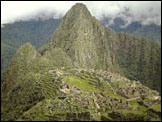 |
Machu Picchu
Peru
This "city in the clouds" was built 8,000 feet above sea level in the 15th century by Incan emperor Pachacutec. Abandoned by the Incas, the city remained unknown until it was rediscovered by an explorer in 1911.
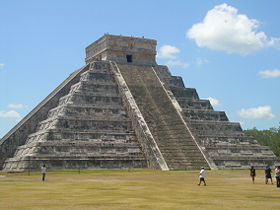 |
Pyramid at Chichen Itza
Mexico
The center of Mayan civilization in its day, Chichen Itza is still visible in several structures, including the pyramid of Kukulkan.
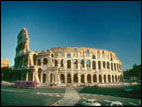 |
Roman Colosseum
Italy
This giant, 50,000 seat amphitheater in the center of Rome was built over 2,000 years ago, and still influences the design of sports stadiums worldwide.
 |
Taj Mahal
India
Built in 1630 by a grieving emperor, Shah Jahan, in honor of his dead wife, this white marble structure combines Indian, Persian, and Islamic style of architecture.
- More from World & News







